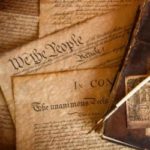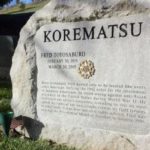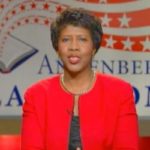As they framed the Constitution, many of the Founding Fathers were wary of a powerful chief executive who might overshadow the legislative branch. By constructing the separation of powers within the federal government with a system of checks and balances, the Framers sought to limit the power of the president. Students will investigate not only the formal checks as laid out in the Constitution, but also explore the informal checks on presidential power that have emerged in the modern era. Free registration required to access lesson plan.
Executive Power in Times of Crisis
This lesson explores the use of executive power in times of crisis in relation to both the Constitution and the legislation of the time. Using exclusive primary source material from the National Archives at the Ronald Reagan Presidential Library, students will explore how President Lincoln, President Reagan, and President Obama utilized their executive power against the respective threats of their time.
The Appointment of Sandra Day O’Connor
The U.S. Constitution grants the President the power to appoint people to a variety of government positions. These appointments require careful thought and consideration since the people can have a great impact on the lives of many Americans during that President’s term. Some appointments need even greater thought and consideration, and those are to the federal judicial system and more importantly, to the Supreme Court of the United States. Justices of the Supreme Court (and other federal courts) serve lifetime appointments. Their rulings as they interpret the Constitution, and other situations as outlined in Article III of the Constitution, can have far-reaching effects for generations. With this awesome power to appoint comes an equally awesome responsibility to make sure that the individuals are the best people for the job. In this lesson, students will examine the appointment of Supreme Court Justice Sandra Day O’Connor, who was also the first female Justice. Students will examine the process by which a President makes the selection and the steps that lead to that person being confirmed by the Senate (or not).
Election: The Road to the White House (Secondary)
During an election, civic energy reaches a fever pitch. The vote is one of the citizen’s most powerful tools, and advocating for a candidate, a set of ideas, or a platform is the right of every citizen. The President of the United States is often called the most powerful person in the world, so with every presidential election, the stakes are high. This unit is designed to teach students about presidential elections. It is not a collection of facts, diagrams, and explanations of processes. It is an interactive, project-based unit that invites the student to fully engage in the process of an election while also informing students about how elections work. It is our hope that this unit helps cultivate the sorts of informed and engaged citizens that are so essential to our democracy.
Presidential Signing Statements
Key Constitutional Concepts

This three-part documentary discusses why and how the Constitution was created at the Constitutional Convention and explores the protection of individuals’ rights in the Supreme Court case Gideon v. Wainwright and limits on presidential power through checks and balances in the Supreme Court case Youngstown v. Sawyer.
Each segment is about 20 minutes.
Closed captions available in multiple languages, including Spanish.
Grade 6-8 An Energetic Executive
The purpose of this lesson is to assist student understanding of the expressed and implied powers of the president. By the conclusion of this lesson, students will understand the scope and purpose of these powers and be able to describe how they play out in real life. Students will also understand the importance of constitutional checks on presidential powers–examining the ways that a president could abuse his or her power should constitutional checks not exist.
Commemorating Presidents’ Day Resources
Teach your high school students about the constitutional legacy of George Washington, James Madison, Abraham Lincoln, and Ronald Reagan this Presidents’ Day. These free, ready-to-use lessons will engage your students in learning about these important presidents and how they shaped the history and Constitution of our nation. Each lesson was written and reviewed by scholars and contains questions to test student knowledge.
Abraham Lincoln and Executive Power
This lesson traces the rise of Abraham Lincoln from his humble beginnings to the presidency. It examines Lincoln’s ideas and decisions regarding slavery and the use of presidential power to preserve the Union during the Civil War. After the lesson, students should be able to explain how Lincoln overcame daunting disadvantages to become a great president, analyze and evaluate his decisions in response the critical constitutional issues of the Civil War, and understand and appreciate his legacy to American constitutionalism and citizenship.
Korematsu and Civil Liberties

This documentary explores the landmark case Korematsu v. U.S. (1944) concerning the constitutionality of presidential executive order 9066 during World War II that gave the U.S. military the power to ban thousands of American citizens of Japanese ancestry from areas considered important to national security. A PDF lesson plan accompanies this video.
